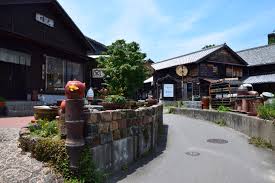Nothing better than a TOKONAME pot

If your bonsai is close to your design idea, the time has come to look for a pot. A Tokoname pot is, undoubtedly, one of your best options. Can you imagine your bonsai with a tokoname pot? Well, it would reach a competition level! Discover what makes these pots so special, in this blog.
Where was the Tokoname ceramic born ?
Tokoname is the name of a city in southern Japan, on the Aichi Peninsula. The story establishes its origins in the art of ceramics at the end of the “Heian[1]” period, between 794 and 1192. It’s said that it was from that period that the city turned to mass production of ceramics, with one of the 6 oldest furnaces in Japan. These had up to 10 fireplaces of different sizes to handle the output of cooking gases.
The ovens are made of different levels. The largest can have up to 5 levels. This ensures the distribution of the heat, that flows from the lowest level to the highest, for a good cooking. This way, the ceramic durability is also increased.
If one day you visit the city of Tokoname, do not forget to walk the Pottery Footpath or “Yakimono Sanpomichi”. This is a recommended visit in order to learn more about this very specific ceramic. It would also be a good opportunity to bring you back a few bonsai pots from the famous city of Tokoname. Yakimono Sanpomichi is a must in your next trip to Japan!
A production that follows tradition
The main advantage of this ceramic style is that it contains a clay rich in iron. This combination gives a consistency and colours distinctive of this city.
In addition, it highly respects the technique in the realization of the molds, the cooking, and the old finishing technique, ensuring the highest quality of its pieces.
Famous are its ceramics called “Shudei-Yaki” (red clay), “Hakudei-yaki” (white clay) and “Hiiro-yaki” (fire-colored clay). Both the red clay and the fire-colored clay are what give the characteristic color and hue of the Tokoname pots that we use for bonsai.
The process begins with the modeling, either by hand, with a wheel, or with an already prepared mold. Follow the burnishing[2] of the pieces. Then come the polishing, the carving and finally the varnish bath before the first cooking.
Another peculiar characteristic of Tokoname ceramics is the addition of a little sea salt while cooking. Salt comes from the sea surrounding that city. This provides a distinctive finish when the pieces are cooked. At the end, a final polishing is done after cooking, to achieve the desired finish.
Each potter in the city has his official Tokoname seal, stamped on the bottom of the pot, proving the unique and singular nature of Tokoname ceramics.
That seal is only achieved with the demonstration of technique management, skills as a master potter, and respect for tradition. This seal is an honour and a guarantee for those who receive one of these stamped ceramic pieces.
[1] Heian = It was the period after the Nara era, that began in 794, after the transfer of the capital of Japan to Heian-kyō (now Tokyo)
[2] burnishing = It is a technique that consists in rubbing the clay surface of a ceramic piece until a polished, shiny appearance and a certain soft touching are achieved. It can be manual or with various tools.
You may also be interested in…
About the Author
Mistral Bonsai
In Mistral Bonsai we are a communication team, technicians and masters committed from the first day to disseminating the wonderful art of bonsai. A world that offers many things to share. We believe that a bonsai is a tree with a soul, unique and unrepeatable. Another of our most essential pillars is, how could it be otherwise, our close commitment to the preservation of the environment and nature.
Categories
Bonsai cultivation and care (54)
Bonsai gift (2)
Bonsai pests and diseases (6)
Bonsai repotting (3)
bonsai substrates (2)
bonsai tools (1)
Bonsai work (10)
Ceramic pots (3)
Chinese culture (2)
Chinese culture (1)
Corporative Mistral Bonsai (8)
Cuidados del bonsái (22)
Cultivo del bonsái (20)
Dead wood (2)


